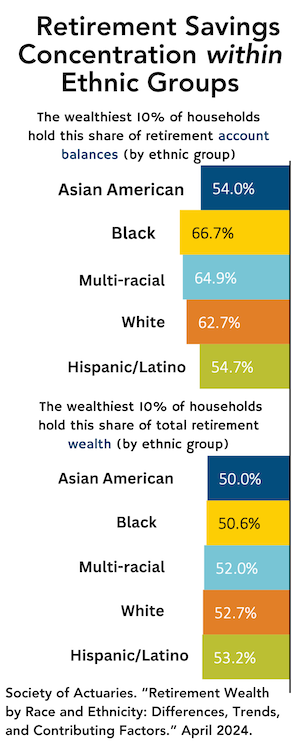
Even the smartest people are susceptible to buying investments at market peaks and selling at market troughs. They also tend to retire at market peaks even though they would probably be better off retiring at market troughs.
That’s a phenomenon that Rui Yao, Ph.D., and Eric Park, professors of personal financial planning at the University of Missouri-Columbia, have documented in “Market Performance and the Timing of Retirement,” a recent paper in the Journal of Personal Finance.
 During the equities market roller coaster of the 2000s, Yao (at right) noticed a self-defeating pattern among some of her older colleagues. When the market was down, both they and their portfolios were depressed; they felt too nervous to trade their tenured positions for retirement. The opposite was true when stocks boomed.
During the equities market roller coaster of the 2000s, Yao (at right) noticed a self-defeating pattern among some of her older colleagues. When the market was down, both they and their portfolios were depressed; they felt too nervous to trade their tenured positions for retirement. The opposite was true when stocks boomed.
“When we had a recession after 9-11, I heard people say, ‘I can’t afford to retire,’” Yao told RIJ recently. “Then, right before the 2008 recession, I heard them say, ‘I’ve reached my financial goal, it’s time to start babysitting the grandkids.’ After the market dropped, they said, ‘What have I done?’”
People like to retire when their 401(k) accounts hit certain targets. That often happens during a bull market. But when stock prices revert to their long-term averages, they find themselves high and dry, like boaters stranded on a sand bar when the tide goes out.
To find out if evidence of this trend was more than anecdotal, Yao and Park parsed the data that the Institute for Social Research at the University of Michigan gathers through its biannual Health and Retirement Study (HRS).
Looking specifically at a group of 4,000 Americans who had been between the ages 51 and 61 in 1992, they discovered a gradual but steady upward progression in their rate of retirement during the bull markets of 1993 to 2000 and 2003 to 2006.
“We found that people are most likely to retire when the market is at its peak,” Yao said. Thanks to the tendency of “reversion to the mean” that sets them up for a fall. It maximizes their “sequence of returns risk,” which is the risk that a downturn in early retirement, when coupled with unavoidable withdrawals, can put a double-whammy on savings and truncate a nest egg’s long-range viability.
“Market sequencing shows that when you’re hit by negative return early in retirement, then the longevity of your retirement income is shortened—unless you put more money in,” she added.
Not everybody whose retirement date coincides with a market peak is equally prone to falling into this trap, Yao said. Highly compensated people are less prone to it, for the simple reason that their incentive to keep working is high.
On the other hand, people whose spouses are already retired are more prone to it, because couples like to retire together. People who have pensions, even small ones, are more prone to it, because they feel more secure about retiring than people who don’t.
How can advisors help their clients avoid this trap? There’s nothing inherently wrong about retiring at a market peak, Yao said. The problem comes from retiring at a peak and acting as if the market will keep rising.
If new retirees sold enough of their appreciated assets to create a cash buffer that can last a few years, or if they used a chunk of their appreciated savings to buy guaranteed lifetime income, they wouldn’t necessarily fall into a sequence-of-returns trap.
Fewer people would fall into the trap, Yao speculated, if their 401(k) plan sponsors or providers warned them about it. But few people are lucky enough to get that type of advice.
“I think they’re doing an inadequate job,” she said, referring to participant education around the retirement date. “The 401(k) plans all emphasize that participants need to reach a target amount. But how often are people told that they shouldn’t retire if they reach their targets at the end of a bull market? And when people do retire, they’re advised to stay invested largely in stocks.”
The topic of safe withdrawal rates gets a lot more attention than sequence-of-returns risk, those priorities should be reversed, Yao said. “A lot of technical analysts have looked at the question of safe withdrawal rates without realizing that the withdrawal rate depends on projections of market performance that are heavily affected by recent events,” she told RIJ. “But there will always be ups and downs. That’s why we have averages.”
© 2012 RIJ Publishing LLC. All rights reserved.


